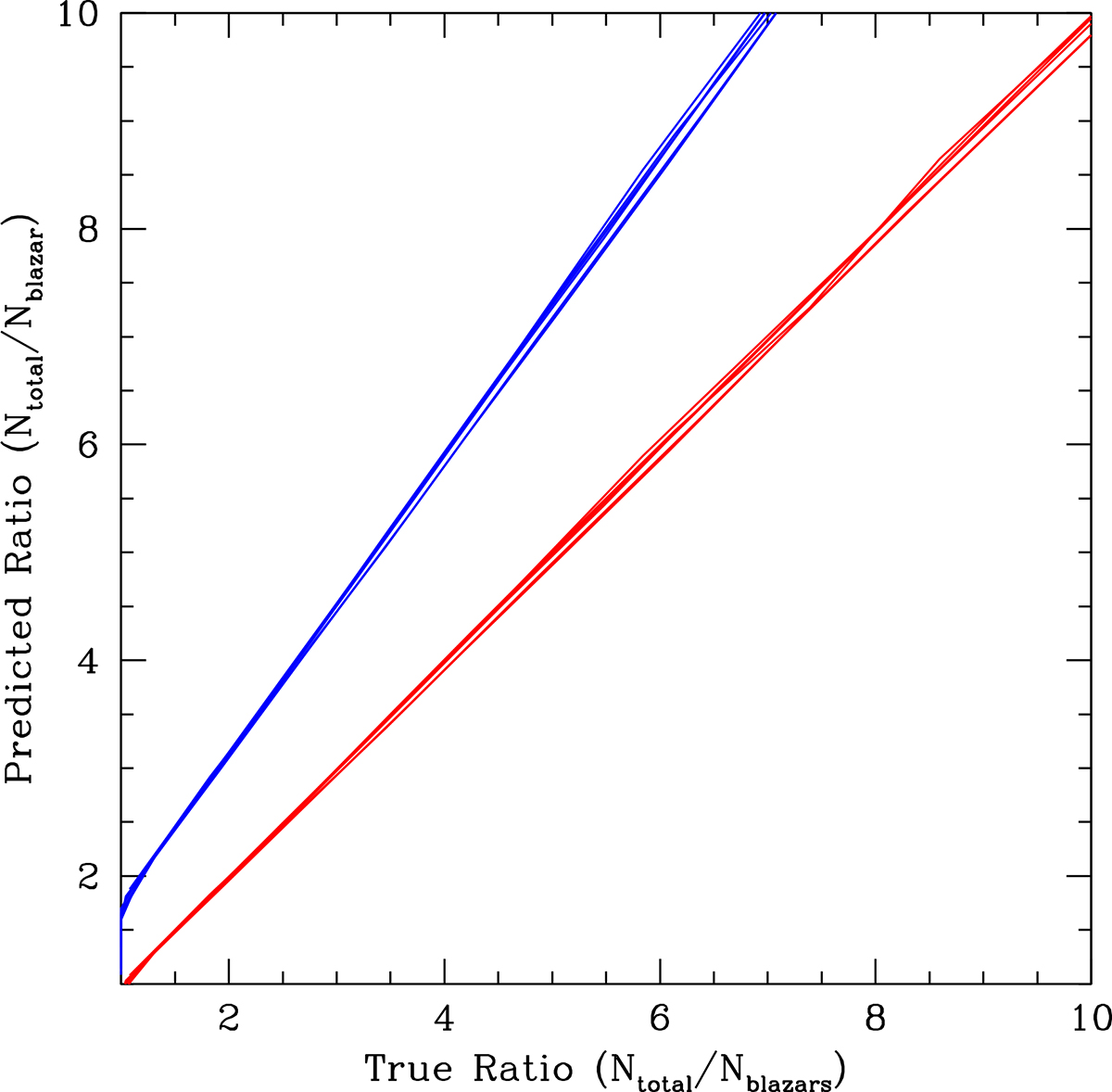Fig. A.1.

Download original image
Results of a simulation where N jets of equal radio flux density have been randomly oriented on the sky and relativistically beamed according to the angle (θ) between the jet and the observer. We assumed different values of the beaming parameters (i.e. Γ = 5, 10, 15 and p = 2 and 3) and different starting values of the un-beamed radio flux density (from 0.01 to 100 mJy). We then imposed a flux limit of 30 mJy and classified all the sources with θ < 1/Γ as blazars. These combinations yielded different values (from 1 to 10) for the ratio between the total number of sources (blazar+misaligned objects) and blazars that are included in the simulated sample. Finally, we applied Eq 1 and Eq 2 to the simulated blazar sample (assuming the correct value of p) to recover the expected total number of sources above the flux limit. In the figure, we compare the predicted total-blazar number ratio with the true one. Equation 1 (blue line) systematically overestimates the result by a factor of ∼1.4, while equation 2 (red line) provides the correct results.
Current usage metrics show cumulative count of Article Views (full-text article views including HTML views, PDF and ePub downloads, according to the available data) and Abstracts Views on Vision4Press platform.
Data correspond to usage on the plateform after 2015. The current usage metrics is available 48-96 hours after online publication and is updated daily on week days.
Initial download of the metrics may take a while.


